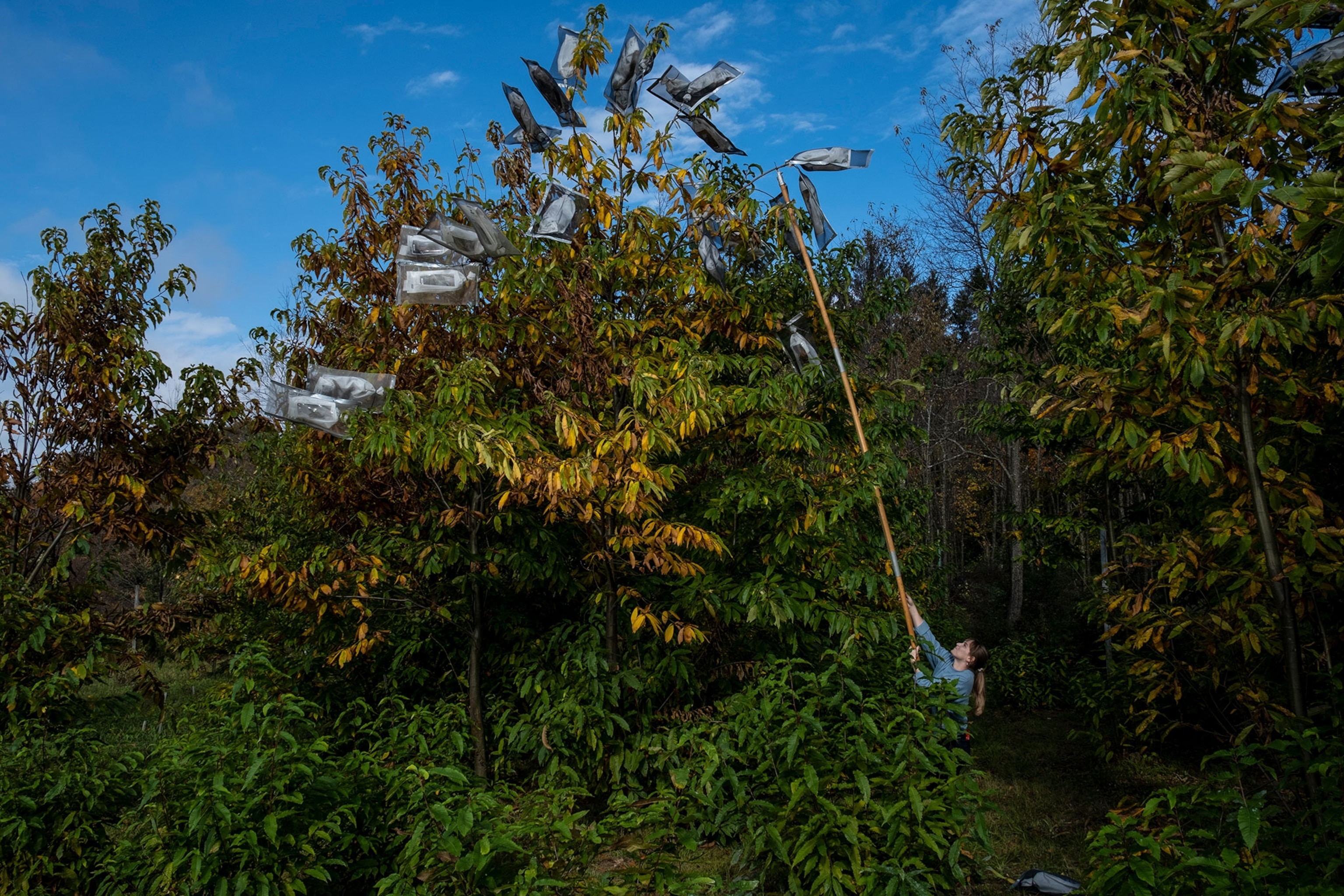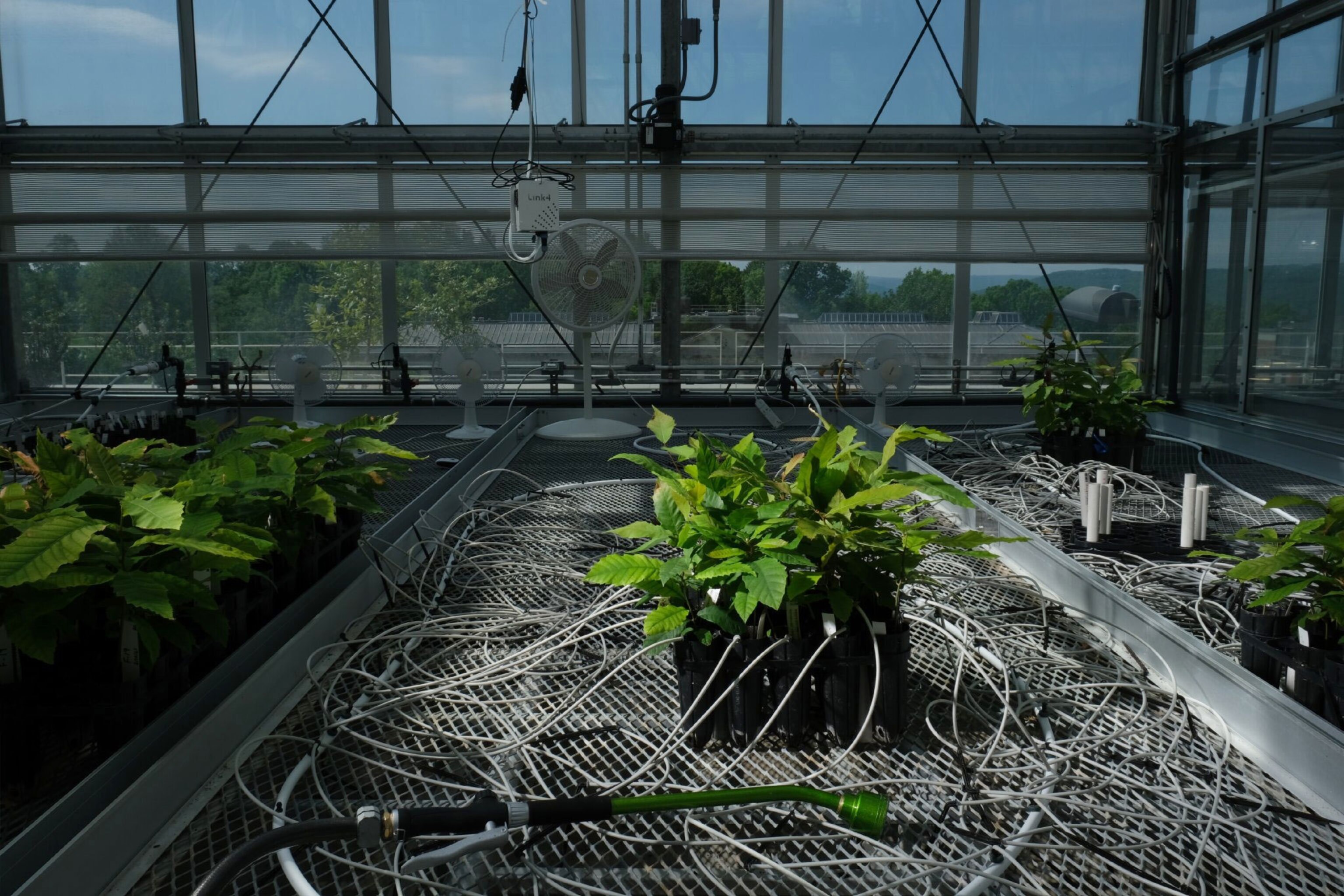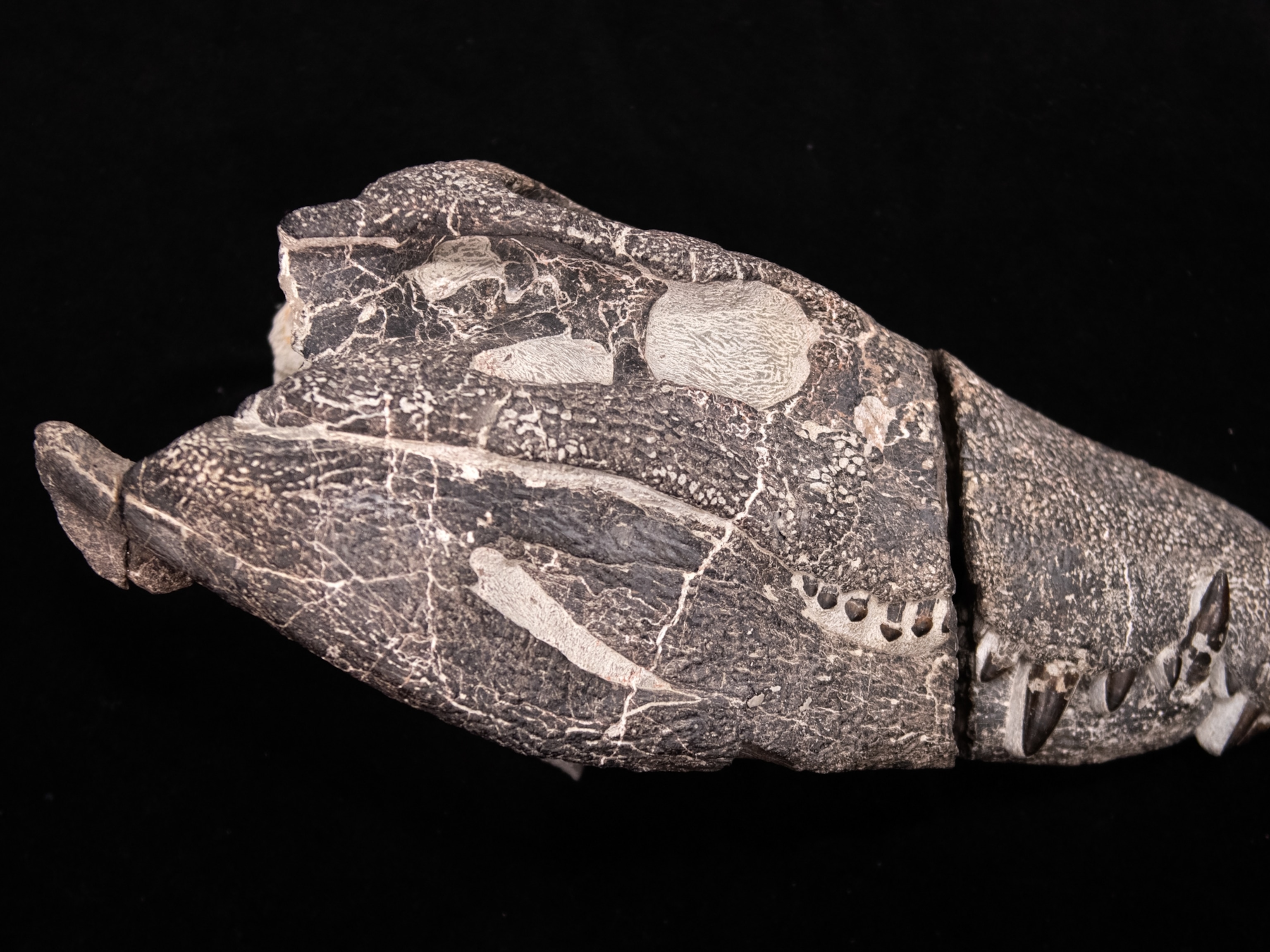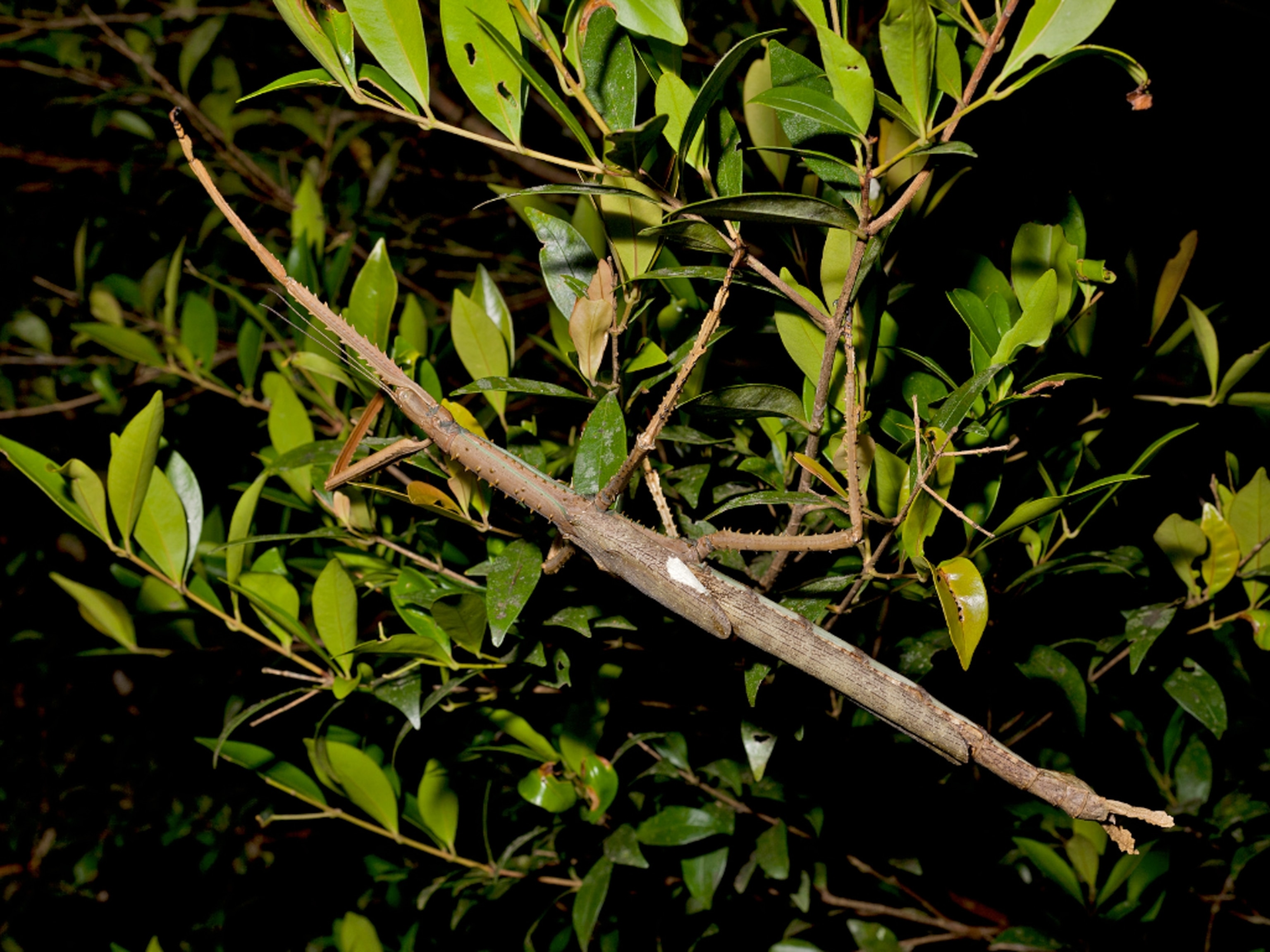
To save chestnut trees, we may have to ‘play God’
Four billion American chestnut trees were killed by a deadly fungus. In the quest for its revival, can scientists learn to build a better tree?
By the time Rex Mann was old enough to work in the forests of Appalachia, they were full of the dead.
“We called them gray ghosts,” the now 77-year-old retired forester says of the American chestnut tree scattered throughout his former North Carolina home and still towering over the forest floors.
They were skeletal remains of majestic trees that once grew to be as much as 100 feet tall and 10 feet wide. Over the course of the 20th century, an estimated four billion of them, one-fourth of the hardwood trees growing in Appalachia, were killed by an Asian fungus accidentally imported in the late 19th century. It’s considered one of the worst environmental disasters to strike North America—and also a preview.
Emerald ash borer, sudden oak death, Dutch elm disease, oak wilt disease, walnut canker, hemlock woolly adelgid—in a globalizing world, many trees are facing pandemics of their own. And now climate change, with its catastrophic droughts, floods, and heat waves, is making it especially difficult to fight off attackers. Even Joshua trees, icons of the southwestern desert, are finding that the world is too warm.
All this has led some scientists to ask: Can we build better trees, ones that are more able to cope? And here again the American chestnut may soon set a precedent—this time on the path to resurrection. By tweaking its DNA, scientists say, they’ve created a blight-resistant tree that’s ready for a second act. If it works for the American chestnut, perhaps it can work for other similarly afflicted trees.
“Some people say, ‘You’re playing God,’ ” says Allen Nichols, president of the New York chapter of the American Chestnut Foundation. “What I say is: We’ve been playing the devil for ages, so we need to start playing God, or we’re going to start losing a whole mess of stuff.”
How the fungus kills
The chestnut blight is caused by an insidious fungus that leaves orange-tinted cankers on a tree’s trunk and limbs. These splotchy indentations, reminiscent of a bruise, can choke off the tree’s flow of water and nutrients. The fungus, Cryphonectria parasitica, spares the young. But as tree bark ages, it cracks, letting microscopic fungal spores enter the trunk, where they release oxalic acid that kills tree tissue.
As a species, American chestnuts have survived by shooting up clones from the roots of dead trees. But it’s a Sisyphean task; blight is inevitable with age, and a tree’s ability to clone itself is not infinite.
In their attempts to save the chestnuts, foresters have sprayed the trees with fungicides, infected them with fungus-killing viruses, and even burned infected trees to the ground. Efforts to breed American chestnuts with Chinese counterparts to create a hybrid resistant to the blight began as early as the 1930s and in earnest in the 1950s. The American Chestnut Foundation began formal work on the hybrid in the 1980s.

“Fast-forward 30-plus years of breeding work, and what we see is, blight resistance is much more complicated than we really thought,” says Tom Saielli, a forest scientist for the foundation.
Scientists now believe that as many as nine gene regions working together may be responsible for providing blight resistance, which makes breeding a challenge. The real question is, What is the right combination of genes to produce blight resistance? Breeding also requires many new generations to make progress, and each generation takes years.
The promise, and peril, of genetic engineering
Genetic engineering offers a controversial shortcut to creating a truly American blight-resistant chestnut. In the 1990s Charles Maynard and Bill Powell at the SUNY College of Environmental Science and Forestry in Syracuse, New York, began that quest, using what was then emerging technology. Powell says it was like having to “build a boat before we went fishing. We just started testing genes.”
His eureka moment came when he learned of a wheat gene that enhanced pathogen resistance in tomatoes. The gene produces oxalate oxidase—OxO for short—an enzyme that breaks down the acid produced by the blight fungus, rendering it harmless. By 2014 Maynard and Powell had successfully added this wheat gene to the chestnut’s genome. They christened the modified tree Darling 58, after Herb Darling, an engineer and avid supporter of their work. Trees grown in test plots at Syracuse proved tolerant of the blight.

Chestnut fans wanted to know when they could get Darling 58. Eight years later, they’re still waiting.
Powell is confident Darling 58 is safe, but transgenic trees inspire a fear of the unknown.
Who can grow genetically modified crops and where they can be grown are tightly regulated in the United States. Powell and his colleagues have asked the Department of Agriculture, the Food and Drug Administration, and the Environmental Protection Agency to deregulate Darling 58, affording it the status of a non-modified tree. It’s the first time these agencies have grappled with such a request—to release a genetically modified tree into the wild—and it would set a precedent for other plant species.
“Once these are out in the forest, there’s no calling them back. There’s no way to reverse it,” says Anne Petermann, executive director of the Global Justice Ecology Project. Some Indigenous activists also are concerned the trees will violate their right to keep genetically modified organisms, or GMOs, off their land.
A trailblazing tree
Despite these fears, scientists say genetic engineering is a powerful tool for keeping forest ecosystems intact. At Purdue University, researchers have been studying ways to genetically modify ash trees to fend off the emerald ash borer, a highly destructive beetle. In Canada, scientists have developed a genetically modified poplar that wards off spruce budworm. And at Powell’s lab in Syracuse, scientists are investigating new genes to embed in elm and chinquapin trees.
For fans of the American chestnut, like Mann, whose parents told stories of the tree’s demise and whose grandchildren may see its return, restoring the chestnut would be proof that environmental wrongs can be righted. At his home in Kentucky, Mann engages in what he calls “chestnut evangelism.” He says he’ll preach the value of chestnuts “until I start drooling.”
“A lot of people don’t even know all this death and destruction has been unleashed in our forest,” he says. “I think we have no right to just stand by and let all this disappear.”
(As the world warms, forests are struggling to survive. Read about three other solutions that can help trees adapt.)








